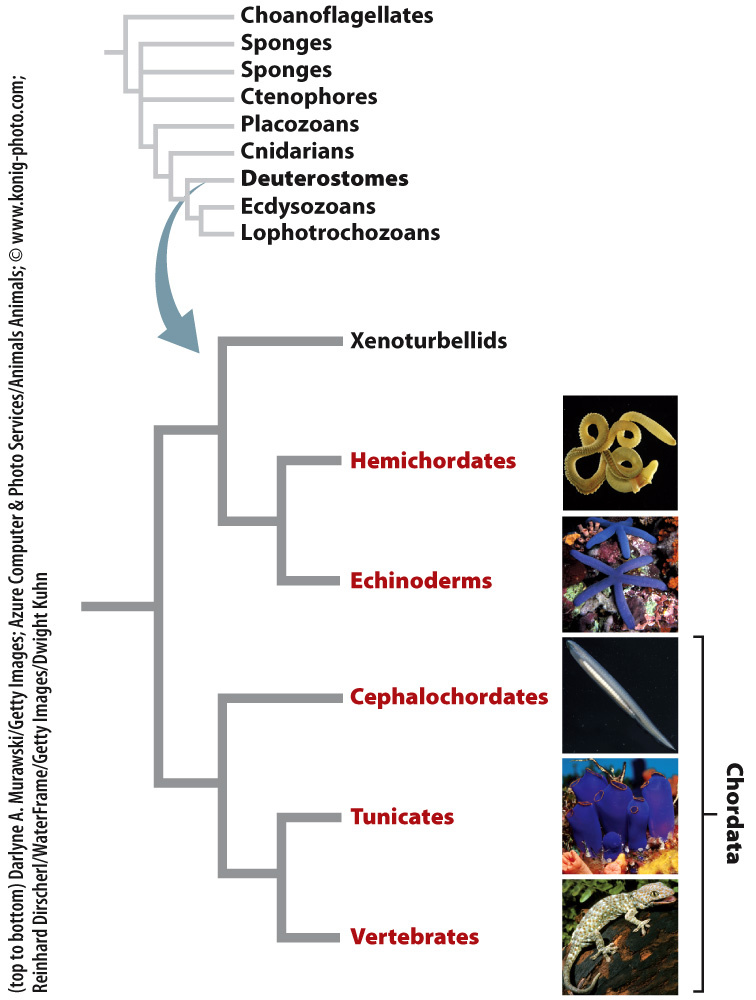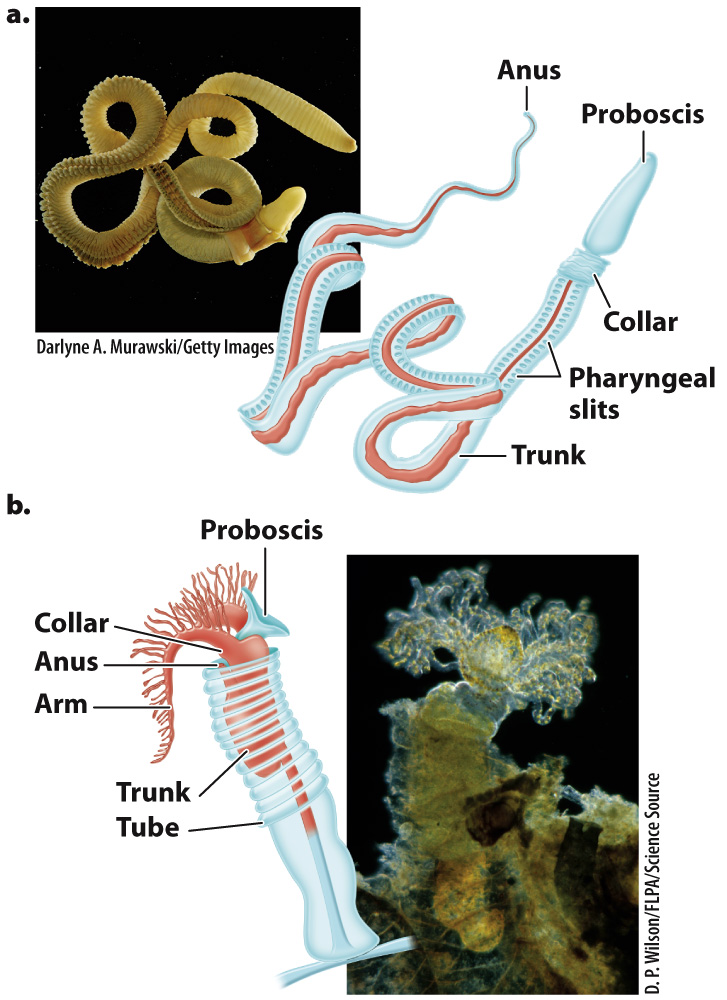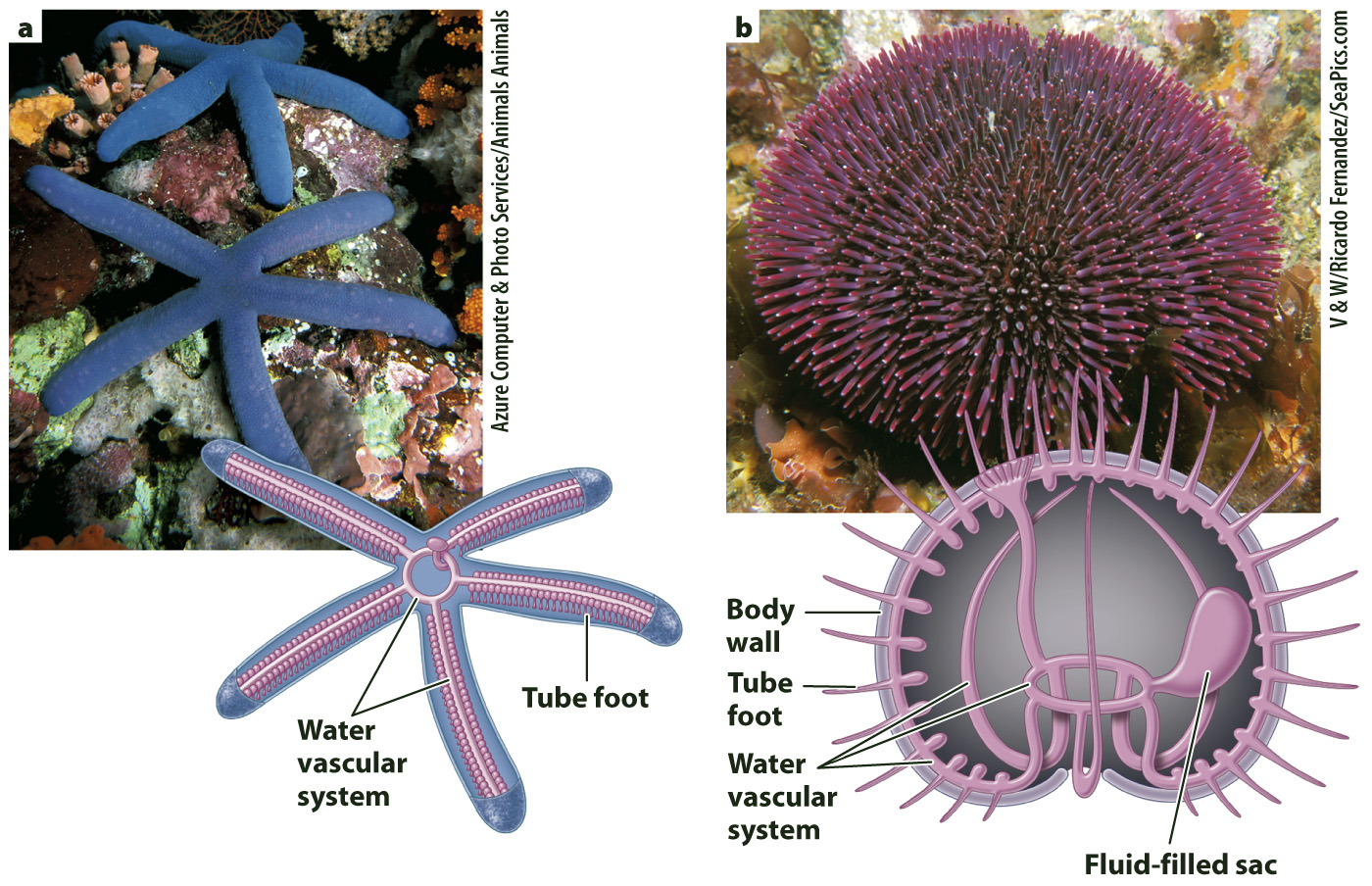Deuterostomes include humans and other chordates, and also acorn worms and sea stars.
Having introduced diversity within protostome animals, we now turn our attention to the other great bilaterian group, the Deuterostomia. Deuterostome animals (Fig. 44.25) include three major phyla: Hemichordata (acorn worms), Echinodermata (sea urchins and sea stars), and Chordata (vertebrates and closely related invertebrate animals such as sea squirts).

964
Let’s begin with the deuterostomes most distantly related to the vertebrates, the hemichordates and echinoderms. Hemichordates include acorn worms, about 75 species of wormlike animals that move through seafloor sediments in search of food particles. Pterobranchs, which are also hemichordates, consist of about a dozen species of animals that attach to the seafloor and use tentacles to filter food from seawater (Fig. 44.26). Hemichordates all have a mouth on an elongate protuberance called a proboscis that connects to the digestive tract by a tube called the pharynx, which contains a number of vertical openings called pharyngeal slits separated by stiff rods of protein. They also have a dorsal nerve cord. Additional characters that relate hemichordates to other deuterostomes are apparent in embryological and larval development. Nonetheless, adult hemichordates have body plans quite distinct from those of chordates and echinoderms.

Another major group of deuterostomes is the echinoderms, among the most distinctive of all animal phyla. Echinoderms include sea stars and sea urchins (including sand dollars), as well as brittle stars, sea cucumbers, and sea lilies—

Zoologists have long known that echinoderm and hemichordate larvae share many features. Molecular sequence data now confirm that echinoderms are the closest relatives of hemichordates, with chordates a sister group to the group containing echinoderms and hemichordates (see Fig. 44.25).